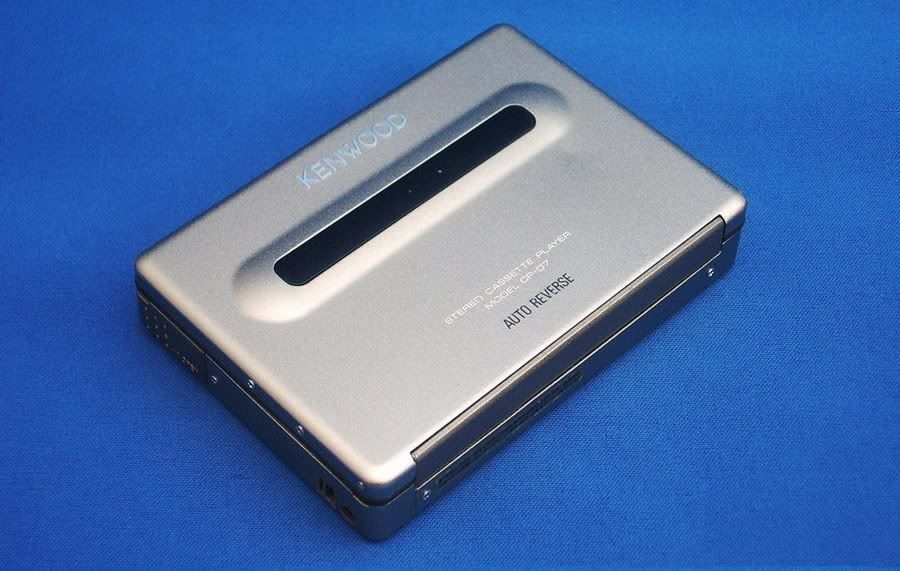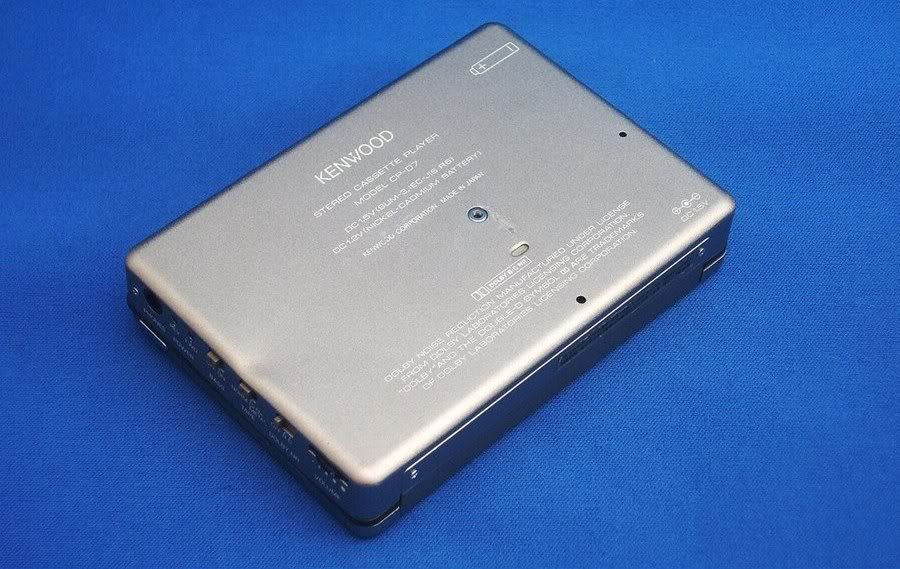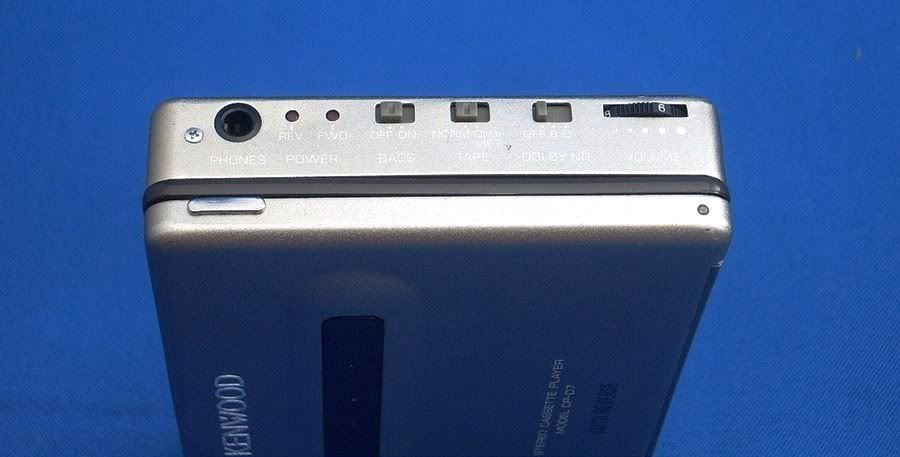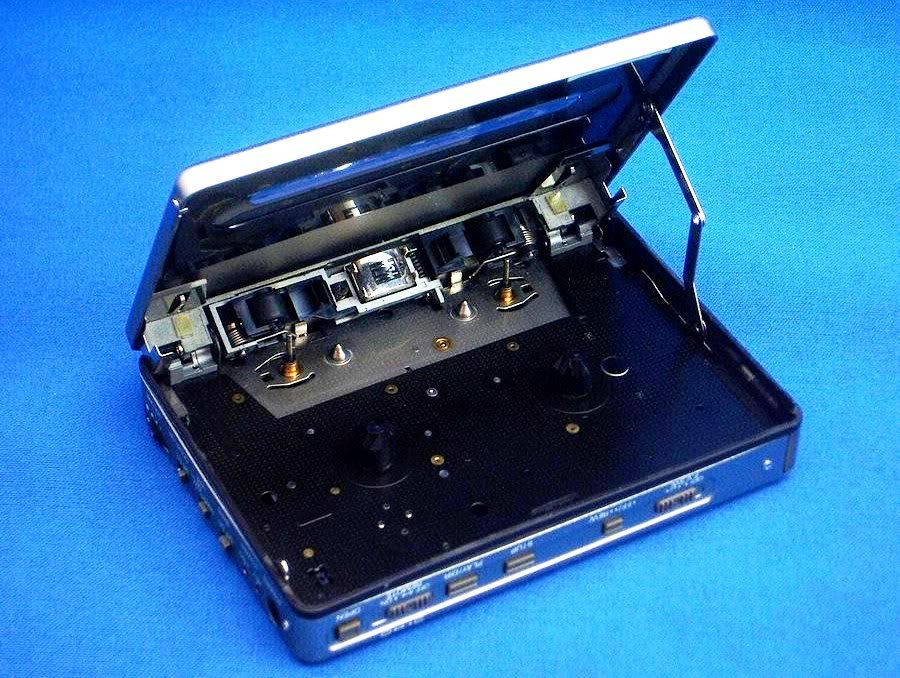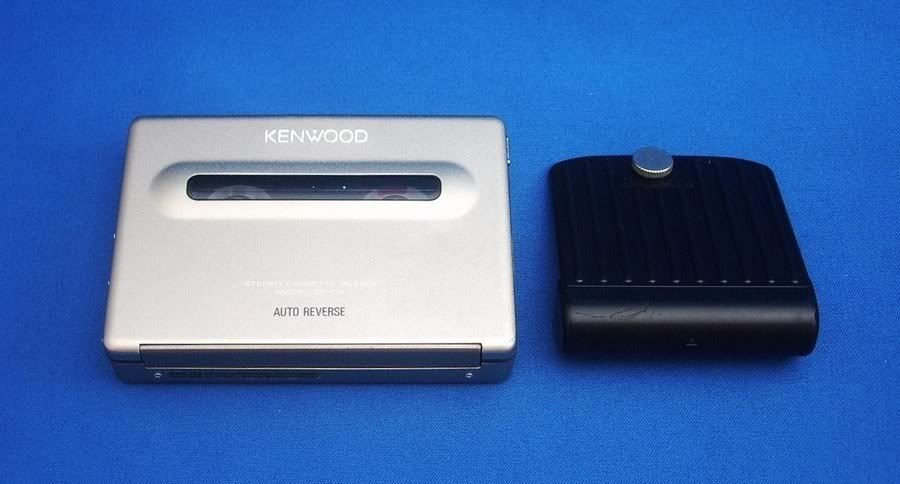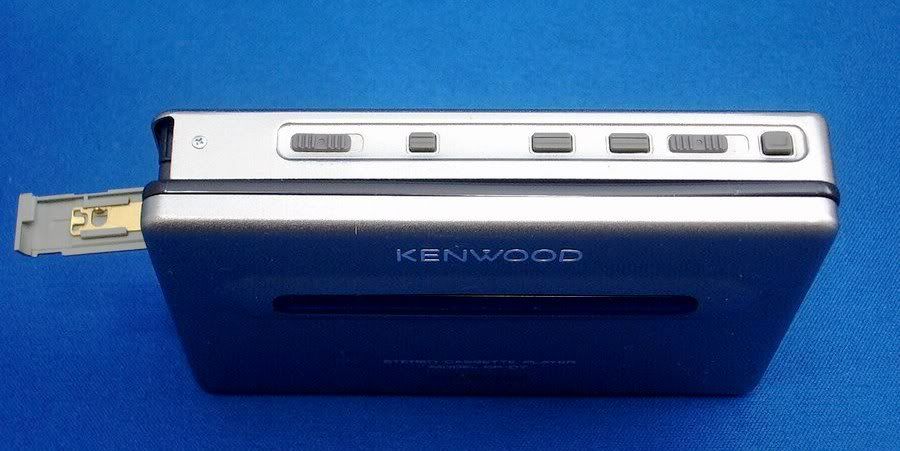johnedward - 2010-08-07 20:20
Highly sought after and often hard to find or obtain the Dolby C Walkman offer generally the highest high fidelity sound the portable Walkman offer. I would like to make this list as complete and correct as our world of forum members can make it. Further discussion about Dolby C circuitry welcome. I have listed the 9 models I own with Dolby C. PLEASE add any additional pictures of models not shown or your Dolby C models.
LET US GET SOME GREAT FORUM PARTICIPATION AND DISCUSSION GOING HERE !!!!
PLEASE COPY AND PASTE LIST YOUR REPLY IF YOU CAN ADD ANY DOLBY C MODELS NOT LISTED. ADD YEAR and #/Type of battery used if not shown.
AIWA 1. HS-PX101 ( ? ) - HS-PX700 (USA ?) they are same
2. HS-PC202 (1988) AAAx2 - also MKII and MKIII
3. HS-PX20 ( ? ) -
3. HS-PX303 ( ? ) AAAx2
4. HS-PX505/HS-PX50 ( ? ) - Amorphous head
5. HS-JX707/HS-JX70 Japan only TV band/HS-JX707D ( ? )- Tape often not working, voice announce feature
6. HS-JX909 ( ? ) -Gold version of HS-JX707,new Aiwa logo,no fancy box
7. HS-JX929 ( ? ) -Update of HS-JX70 with AM Stereo, new Aiwa logo
8. HS-PX1000( ? ) - Real Time Spectrum Analyzer, Titanium body
9. HS-JX3000( ? ) - HS-JX3000D had TV band
10. HS-PC204 ( ? ) -
11. HS-PX410 (1992) AAAx2 -
KENWOOD 1. CP-C7 ( ? ) -
SONY 1. WM-701C, 701S, 701T (1989) - 1.2v Gumstick
2. WM-F701C (1989 ) - 1.2v Gumstick
3. WM-550C (1987/88) - 1.2v Gumstick
4. WM-F550C (1987/88) - 1.2v Gumstick
5. WM-DC-2 (1983) - AAx2
6. WM-D6C (1983) - AAx4
7. WM-DD9 (1990) - AAx1 or 1.2v Gumstick
8. WM-DX100 (1991) -AAx1 or 1.2v Gumstick
9. WM-EX49C (1990)- AAx1 or 1.2 Gumstick
10. WM-B603 Same as EX49C Euro model
11. WM-703C (1990)- 1.2v Gumstick
PANASONIC 1. RQ-S80 (1994) - 1.2v Gumstick
2. RQ-P525 ( ? ) AAx2 -
MY 9 Dolby C Walkman *DD9 not shown being refurbished*
Dear John !
I will search through my collection soon to find more Dolby C units.
Besides let me ask a question - What is the sense of Dolby C ? Did you ever use Dolby C ? Did you even use Dolby B ? Dolby C is some kind of pain in my ears. It cuts off the noise but also it cuts of so many acustic details that it is no more enjoyable to me - by far. Same with Dolby B, not so strong but strong enough not to use it.....
quote:
Originally posted by Eingang:
Dear John !
I will search through my collection soon to find more Dolby C units.
Besides let me ask a question - What is the sense of Dolby C ? Did you ever use Dolby C ? Did you even use Dolby B ? Dolby C is some kind of pain in my ears. It cuts off the noise but also it cuts of so many acustic details that it is no more enjoyable to me - by far. Same with Dolby B, not so strong but strong enough not to use it.....
I generally never use Dolby B. From my observation the quality of the circuitry often makes use of B kill the high frequency and can affect sound quality overall. Yet a few walkman like the WM-7 has a superior Dolby B in my opinion. It does reduce the high range some but not objectionable and it really does a good job of making hiss nearly inaudible especially with the original headphones.
Dolby C also the quality of the sound and effect on hiss varies with different models. OF NOTE since few of us have NIB examples and even these the PCB and components are 15-25 years old now who knows what effect this has on sound. We could take two same models and comparison listen they probably wont sound same. I believe the electronics age and sound can usually be less than original specs. AND MAYBE a few may actually sound better??? It is important to use a properly calibrated Dolby C deck to record signal but I find the DC2, DD9, D6C, Aiwa HS-PX202 ( superb ) may limit a slight the high frequency but with HIGHER END EAR BUDS the hiss can be objectionable with most players yet these 4 reduce it significantly. Classical and New Age music most notable. On Rock and many other music venues with steady higher levels of recorded signal the hiss is not much noticeable and yes I do not use B or C in this case.
SONY WM-D6CSo much has been said about this venerable best recording walkman. I will let others expound the virtues of this workhorse icon. Simply a FANTASTIC SOUNDING PLAYER !!.. Just not very light or small but then again it is portable and it is ABOUT THE SOUND !!

simply amazing! John, to me you have the finest collection of players I have ever seen. I especially like your wide views on walkman technology regardless of what era was it from. That Panasonic RQ-S80 is a cutie!!
On PX410... yes I have had that one before. I think it was a 1992 model as it belonged to the PX610/410 and 310 series. It was essentially a player that was loaded with the features of the top models but without the hefty price tag. 200GPB for a PX1000 back then was quite a lot as it is now and this one was 2 times cheaper and still offered fine performance. It's definitely a bargain for 9 pounds!
Hi John
Where did you see/hear about the chrome S80?
Sent you a PM Elite.
I think the 701c also came in a rare titanium finish.
Thanks Derek you are correct. I had listed it as pewter. Have corrected my post to read Titanium. I have seen one on ebay once.
brigadier.vytas - 2010-08-09 07:27
those Aiwas with old logo are so nice..
DOLBY NOISE REDUCTION SYSTEM WIKIPEDIA - DOLBY EXPLAINED Audio cassettes with Dolby C show big advances By Al Fasoldt
Copyright © 1986, The Syracuse Newspapers
While the inventors of the latest digital audio components are exploring new ways of storing and reproducing sound, the old technology remains competitive. Signs that mass-produced cassette recordings are keeping up with improvements elsewhere come from a major recording company whose name cannot, at present, be revealed.
The secrecy is not a mystery. The company has not yet committed itself to the improved techniques, and simply wants to experiment with its cassette recordings and get the reaction of industry insiders and selected critics. I was sent two of the experimental tapes for evaluation.
They are both rock music recordings, not the best type for judging quality, but I put aside a few of my audiophile prejudices and tried to listen to them as a perceptive rock fan would. After repeated listening sessions, I came away encouraged and delighted.
The technology being tried out has two elements. The first is the use of higher quality blank tape and cassette shells.
Although tape itself is surprisingly cheap (less than 50 or 60 cents for the tape in a standard-quality cassette that retails for about $5), a small increase in the quality of tape stock can add up to a major added expense when hundreds of thousands or even millions of tapes are duplicated.
The shells used in most mass-produced cassette recordings are little more than protective coverings. Most of them do not have the guidance pins and wheels common to high-quality blank tapes such as those from TDK.
As far as I could tell, the shells of the two tapes I was sent still fell sort of the best from TDK, but they did seem better put together than previous shells from the same recording company. Internal tolerances are said to be tighter in the new shells in order to keep the tape from skewing when it passes over the playback head.
Of greater interest were the two small logos on the spines of the cassettes. They indicated that each tape was duplicated with the latest consumer noise-reduction technique, the Dolby type C system, and that each was processed through an HX Pro circuit. These represent the second element in the quality improvements.
Dolby C is built into nearly every cassette deck sold today. By a clever manipulation of signals during recording and playback, it is able to force tape noise far down below the level of the music.
Only a Dolby-C tape deck can get the full benefit of C-type tapes, but HX Pro is a distortion-reducing circuit that operates during recording only. Thus any playback machine - even an inexpensive Walkman player - will show an improved sound from HX Pro recordings. (The name, in its backward phraseology, stands for Headroom Extension, Professional-type.)
On e of the worries expressed privately by recording company executives is that tapes duplicated with Dolby-C encoding will be played back without complementary decoding. In other words, they might be played with a cassette deck's noise-reduction switch in the Dolby B" position - or listened to on a portable player without any noise reduction at all.
The Dolby company insists that in either case the tape will not sound bad. Admittedly, engineers say, a Dolby-C tape played without any decoding in playback will seem a little strange, since soft high-frequency sounds are greatly boosted in recording. But, these engineers maintain, a Dolby-C tape played back with Dolby-B decoding will sound fine.
To test these claims, I listened to the two tapes first without any noise reduction. They were slightly hissy, like the sound of a distant FM station. And, also like some of the distant FM stations that I can pull in were I live, they seemed lifeless and compressed while appearing too bright. Voices jumped out of an unnatural, sandpapery texture, as if someone at the studio had turned the treble control up all the way.
Next, I switched on the standard noise reduction system, Dolby B. The tapes immediately sounded normal. They did not sound good, but most rock recordings don't sound good anyway; they had adequate "punch" but not a real sense of lifelike dynamic range.
Finally, switching in the Dolby-C circuit of the Revox B215 cassette deck that I was using revealed subtleties in both tapes that I had missed before. Tape noise dropped from the now-you-hear-it to the now-you-don't category, and all the sounds that I could identify - at least all the acoustic sounds, ones that weren't synthesized - seemed richer and snappier. Voices, in particular, gained a clarity that made lyrics easier to understand and easier to enjoy.
The comparison listening made it clear that tapes made with HX Pro and Dolby C can sound excellent when mass-produced. The surprise was that they could sound acceptable when played back using Dolby-B circuitry.
This is good news for music lovers. If recording companies - especially the large corporation that made my experimental tapes - can persuade record and tape stores to stock only Dolby-C tapes instead of both Dolby-B and Dolby-C versions, consumers will find a better selection of higher quality recordings. And prices should come down if duplicate inventories are avoided.
However, such a move may be far off, since the unknown factor is whether most large recording companies are even interested in Dolby C at all.
Small audiophile labels have been selling Dolby-C tapes for some time, but the major firms have yet to commit themselves to the new system. Until that happens, such recordings as the two special tapes I received will be no more than tantalizing reminders of a superior technology.
Dear John. Though your list is very nice, you forgot at least TWO furhter unit:
Sony WM-701S + WM-701T
They are identical to 701C technically but they are different ! So you should put them into the list.
Thank you !!!
Concerning Dolby C sound quality:
I have several of those units and there is no hearable difference between them using Dolby C. The effect of DolbyC on sound is so significant that it doesn´t matter at all if the unit is new or old old calibrated or whatsoever - it stays horrible. Of course it depends a bit on the music stlye and you can also improve it by using filters, equalizers and headphones. JX2000 + 3000 and other units come with a filter called BBE which is capable to add some higher frequencies. In result it makes Dolby more bearable but this is no soultion. I mean, even Dolby B sounds so bad and disgustung to me, I really can not understand why anyone would say Dolby C improves sound quality. It even hurts me !!!!!
And I don´t know what you mean with "hiss". I can´t hear such a thing with Dolby B or C. Maybe this depends on headphones, technical problems in your units or you have better ears than me.
To everyone else: Please let us know how you would assess the changes caused by Dolby B and C.... I am curious
I haven't really done anything with Dolby C (I hardly ever record tapes) but the general idea I understand is only things recorded with Dolby C will sound good played back with C, because it's more "aggressive": up to 20dB emphasis/deemphasis according to some sources, instead of B's 10dB. With B, playing back B material with it off will just make the quieter parts have more "treble" compared to the original recording, but shouldn't sound unnatural. But playing back non-Dolby or badly-recorded material with it on will cause the quieter parts to be muddy, and the loud parts to "jump out" unnaturally and have that "
noise gate" effect, especially with C but with B too. C will only be useful for tapes you make yourself, with recorders and players whose heads are aligned consistent with each other.
Thanks for posting that article: it brings up an interesting point, playing back C material with it set to B. This sounds roughly analogous to playing B material with it off. (Sometime I might mess around with making some test recordings, and experiment a bit. I've used B plenty of times when making tapes but not C.)
In my experience at least, just about all pre-recorded tapes don't have squat for worthwhile Dolby [B] preemphasis even when they're labeled so. This is why I hardly ever use Dolby when playing them; it just gives that nasty noise-gate effect. There are a few exceptions here and there, but I don't mind the high-end boost with it off, and I don't mind tape hiss for general listening to begin with, so I don't bother with it.
Dear John - i´ts me again !
Just read and finally understood, that Dolby technology was meant to be used for Dolby recorded tapes only, was it ? This is such a surprise for me since I have never seen or used a tape recorder capable of this function. I knew Dolby always as a feature for playback only.
In the 80s and beginning of the 90s I had several middle and uppper class tape decks and none of them could record with B or C. As I have never heard such tapes I can not judge about the quality and value of Dolby of course. I´ve always seen Dolby as a universal usable feature - just put in any music cassette and go with it.
The thing that confuses me is that I never met any person using Dolby on record and I never seen any commercial tape recorded with Dolby.
Can you estimate the percentage of decks able to record with Dolby ? Or give an impression of how many decks can do that ?
i have alot of old bootleg copies and one player that has functioning dolby c. it is the kenwood you mentioned. it does wonders for those old tapes with alot of hiss. other than that i would never dream of using b or c as it takes all the brightness out of the music for me. they say it eats batteries a little faster but i don't know. at this very moment i am using DSL combined with something called BBE. this is on an aiwa jx 505 and whatever is going on sounds great. it even says it has dolby b on the front which i never even noticed till now. i don't own a player which,to me,sounds any better. just for fun i checked and i have an old maxell 110 minute tape playing compressed down to 64bp/s....yikes....
Hello guys!
I think I need to shed some light on the subject of Dolby noise reduction system. First of all, let me say few things about dolby types.
Dolby B - the original noise reduction system used for analogue cassette tape that reduces the high frequency hiss by 1/3 - at least in theory
Dolby C - further improved version of the B type that reduces hiss by 2/3 - in theory at least
Dolby S - the last and best version of Dolby NR systems that was derived from professional standard Dolby SR. It works on a different principle and offers the most neutral sound without dampened dynamics.
Dolby B is usually a good way to reduce hiss on your tapes but often decks exhibit what I call dynamics dampening. That means that the deck performs differently when recording and differently when playing back. The electronics of the cassette deck are usually not that good to track the encoded Dolby B signal and during playback there are errors that manifest as dynamics and high-frequency cut-off. This is the major reason why people didn't use NR at all. Even if the tape was recorded with dolby B on and played back on that same deck, the results were always mediocre. The last generation of Sony and Pioneer decks perfected the system and this was eliminated.
Dolby C type is something of an oddity. Not from a perspective it was rare but from a perspective of being widely available and yet very limited. The system was based on dolby B in fact but that didn't make these two systems compatible. In fact, the compatibility was horrible. And it still is. Doolby C uses heavily processed signals to alter the sound and these signals radically change the frequency curve. In essence - it makes the sound very bright and brittle. This also worsened the dolby tracking errors during playback. However, if used properly, it could silence the hiss almost compelety.
But, the major problem with B and C NR was the comatibility issue. Even if the dolčby B or C encoded tape sounded good on the deck it was recorded on, the tape usually sounded poor on another cassette deck. That was especially true in the case of dolby C where the tracking errors were huge and the sonic advantages of NR were soon proved to be disadvantages.
That is why the Dolby S system was developed. It was about to solve the compatibility issue. From experience I can tell you that it is by far the most superior NR system. The tapes recorded on my Aiwa sound good on the Pioneer and vice versa. in fact, in low end players such as car decks the dolby S processed tape will sound better than without it, even if that car deck is a non-dolby machine. Dolby S uses much more advanced electronics - dynamics processors rather than simply NR circuits.
On the prerecorded tape issue, most tapes are recorded with dolby B type system and the newer ones were recorded with either dolby S or dolby SR. Dolby S was supposed to save the tape from extinction but it came too late. Why? Because the electronics that would be powerful enough to drive those algorithms were too expensive back then because the technology was new and the IC industry was uncapable of providing faster chips at lower prices - similar to minidisc technology. The fastest computer you could buy in 1992 was a 386 if that for example. By the time the technology reached it's zenith - around 1995/96, it was over.
On a side note, some cassette decks have good dolby B and C implementation - apart from the aforementioned Sonys and Pioneers, those decks would be Aiwas and certainly Nakamichi decks that have the best dolby C implementation I have heard so far. The best dolby S decks I have heard so far are Sony TC-KA6ES, Pioneer CT-S740S and the Yamaha KX-690.
quote:
Originally posted by Eingang:
Dear John - i´ts me again !
Just read and finally understood, that Dolby technology was meant to be used for Dolby recorded tapes only, was it ? This is such a surprise for me since I have never seen or used a tape recorder capable of this function. I knew Dolby always as a feature for playback only.
In the 80s and beginning of the 90s I had several middle and uppper class tape decks and none of them could record with B or C. As I have never heard such tapes I can not judge about the quality and value of Dolby of course. I´ve always seen Dolby as a universal usable feature - just put in any music cassette and go with it.
The thing that confuses me is that I never met any person using Dolby on record and I never seen any commercial tape recorded with Dolby.
Can you estimate the percentage of decks able to record with Dolby ? Or give an impression of how many decks can do that ?
Eingang,
To answer your question about decks having Dolby B or C ( S not discussed as no Walkman had Dolby S). I believe maybe where you are living may have something to do with your not seeing Dolby on decks? Seems MOST unusual to me as my first deck was a Teac A-160 with Dolby B in 1976. I have had Pioneer, Nakamichi, Yamaha and few other ALL had dolby B and C. At least in the USA in the 80's I would say 80% or more of moderate to high end home decks sold had Dolby B and C. Only the lower cost decks came without Dolby. I will confess personally that Dolby B I rarely used with it ON for the walkman but did for home deck. As Tuna said Dolby C recorded on a correctly set up machine ( like a Sony WM-D6C) and played on a quality Dolby C equipped and head alignment walkman or home deck can produce surprising results. My Aiwa PC-202 is my favorite currently (DD9 been away being refurbished for months now) and even though when you switch on Dolby C for a Dolby C encoded tape the high end is SLIGHLY reduced the actual clarity and crispness of bells, cymbals etc is still there with nearly no tape hiss. This using a quality pair of earbuds as most portable over ear headphones you don't hear the hiss nearly as much as ear buds. For music recorded mostly at the peak level of 0 to +3 with little low level music such as Rock and Roll the need for any Noise Reduction system on portable players is minimal. For Classical or New Age where many passages are low signal the tape hiss is very noticeable but much more so on ear buds.
As a closing statement I would say most of my tapes made for use on portable players are recorded WITHOUT DOLBY and NR off on player.
MY FIRST CASSETTE DECK TEAC A-160 1976 note: not a very good deck
Just for reference since we are talking some about home decks ( NOTE PREFER WE KEEP TOPIC MORE FOCUSED ON WALKMAN and DOLBY AS IT APPLIES TO PORTABLE PLAYERS) here is a Most valuable and excellent resource for home tape decks showing features, specifications and retail price often with pictures. No review of decks here is done.
VINTAGE CASSETTE.COMTUNA THANK YOU SO VERY MUCH for taking time to give detailed discussion of Dolby. WELL DONE !!
Could I ask that you do further discussion on subject of Dolby C recorded tapes, levels etc. ( suggestions for the rest of us as I know you have some of the FINEST HIGH END home recording decks that you focus on avg. quality to better home decks including WM-D6C for recording rest of us probably have). I think much of your first post here more based upon HOME RECORDING DECKS/ Technology but VERY useful for us all

ALSO your comments on Dolby C Walkman players and the sound / effectiveness of its use. What is your opinion on Dolby C featured Walkman is it really advantageous and will we use it or as Eingang said "when I switch on Dolby it really affects sound in negative way"
Hello John! You're always welcome my friend!
I'd like to make a small comment on the dolby cassette decks first. There is no way a cassette deck would have the technology without it being clearly visible with the double-D trademark sign on the machine. EThe dolby licenced the technology and the manufacturers had to manufacture by specification and provide declaration of conformity which includes the double-D symbol. In essence - all dolby decks have this symbol regardless of where they are sold or manufactured.
On dolby C recorded tapes... I would suggest using the dolby C carefully. The implementation strongly depends on tape type and brand of the tape. For an example, I have always had good results with TDK SA and MA based tapes such as the SA itself but also the SA-X and even the lower-end CD-ing2. MA and MA-X tapes work great as well. I am referring to my Technics AZ7 deck here as it was originally calibrated to TDK's standards and works best with these tapes.
I wouldn't worry about making dolby C tapes for walkmans as they all work good on my players regardless of which deck I used to record the tape. But, it would be worth mentioning that Aiwa and Sony cassette decks like Aiwa and Sony walkmans. Cheap type-1 or ferric tapes that are not overly bright such as Sony HF and Maxell UR don't sound as good with the dolby C as a standard TDK D or even FE tape. So in essence, it would be better to use a brighter tape for walkman purposes as it will minimize the high frequency loss due to dolby - or at least the perception of it.
On the other hand, I wouldn't suggest using a dolby B on cheap type-1 tapes but rather on chrome or metal tapes. I usually don't push tapes very high into the red so dolby is always welcome but if you like to go into the red - above +3 or +4 dB, try without dolby first and see how you like it and if the hiss is bothering you. Dolby might be useful on softer passages of classical music but it might not be necessary on rock or contemporary music. Don't think of dolby as a miracle worker - it is but a system that was designed to minimize the inherent flaws of the cassette media. If you are making a tape for someone, check first to see what kind of a deck that person has and then decide whether to use dolby or not. The incompatibilities between different brands are expected but it might surprise you how some models withing a certain brand are incompatible with each other! Technics is the best example for that.
Dolby can improve the signal to noise ratio and can improve on the dynamics (not a same thing) but it cannot imrpove the flaws in the recording, the recorder, the tape or the player. Electronics, heads and mechanism in fact can. I have had a Sony cassette deck for a long time - my first dolby S deck. The NR worked great and there was no hiss at all - not even through the headamp. But that doesn't mean it was as good as the Technics AZ7 or the PIoneer. Not even close - the thin film head in the technics and the ultra-flat 15-25k response of the Pioneer killed it every time. So if you don't already like your walkman's sound, dolby C won't make it any better. Luckily, dolby C was implememnted into good units only so the use of the NR in conjunction with other technologies like amorphous heads and good EQ can make any tape shine. I have no doubts about that - heck that is why I am here!
With all this nice debate going on about Dolby NR, I thought I’d re-visit Dolby just to refresh my mind.
So what I did is make a recording just for this test.
To make the recording I used Acoustic Solid one to one Turntable as source and Nakamichi CR7 as recorder. I recorded onto TDK MA-XG tape. I use a 45RPM 200gram re-mastered copy of The Staple Singers – I’ll Take You There.
I made 3 recordings everything being the same except first recording = No Dolby second recording = Dolby B third recording = Dolby C.
My views on Dolby has not changed, the best noise reduction is no noise reduction.
Yes Dolby C did a better job than B but the recording that sounded closest to the original source was the one without NR. The Dolby recordings had less dynamic range and just sounded shut-in. This was on the Nakamichi.
I then tested the recordings on WM-D6C, WM-DC2 and WM-DD9 using Etymotic Research ER-4S in earphones to listen.
I found the same results on all 3 Walkmans as I did on the Nakamichi. They all did a good job of playback except the WM-DD9 which struggled but this was due to the in earphones. The Etymotic was too dificault for the DD9 to drive so I switched to Bang and Olufsen EarSet 3 which worked better.
The final conclusion I came to was none of these players needed the handicap that Dolby brings with it, they all sounded better without NR.
I have not used Dolby S so can’t say what it’s like but the only thing I can say is, it would be just another circuit in the signal path. Anything not needed in the signal path can only degrade the signal not improve it.
I think unless you are recording from a noisy source to a cheap tape or recording maybe say classical music with lots of quiet passages there is no need for Dolby and even them I would still stay away from Dolby
Good explanation by the way Tuna.
hi john, we are compltely computer illeterate so we can't figure out what you are saying, but my wife thinks she knows how to send photo on a regular email address. can you give us your email address and we promise not to give it to anyone else. thanks george
There are a few more variants of the HS-JX707 that all include Dolby C :-
HS-JX70 (Original Japan only version with TV band Note world clock not adjustable. In black and champagne silver)
HS-JX707D (Specification similar to HS-JX70, but with adjustable world clock)
HS-JX909 (Gold version of HS-JX707 without the fancy gift box - new Aiwa logo)
HS-JX929 (Update of HS-JX70 with AM Stereo

- new Aiwa logo)

HS-JX3000D (HS-JX3000 with TV band)
HS-PX20 in a lovely white colour

HS-PX50 / HS-PX505

THANK YOU SO MUCH PLOP for adding the pictures of those Dolby C walkman.
Thanks to DrMR2000 for the following information:
TYPES OF NOISE REDUCTION : tape
All the noise reduction processing systems known.
Variety of noise reduction processing was used This processing was a double-ended system where the record processor boosted certain frequencies and portions of the dynamic range while the playback processor provided a complementary reduction of the signal. These systems are generally referred to as companders for compressor-expander. Two different manufacturers of companders achieved high market penetration. Two others did not, but that is not to say that their equipment was not used somewhere. To the best of my knowledge.
Dolby—The first and probably the widest-used systems. Dolby systems are all additive.
Dolby A—The original 4-band compander from approximately 1968 for professional use.
Dolby SR—The updated version of Dolby A from the mid 1980’s.
Dolby B—This was the consumer single-band compander that has almost universally been applied to cassettes. It was available as an outboard processor and built into later reel-to-reel consumer tape decks.
Dolby C—This was widely available as a built-in processor with cassette decks and also used in a few pro-sumer reel-to-reel multi-track tapes.
Dolby S—This was available as a built-in processor with cassette decks and also used in a few pro-sumer reel-to-reel multi-track tapes.
Dolby HX-Pro—This is a single-ended headroom extension system that was used in very few reel-to-reel recorders, but it does not matter since it is a single-ended system working during the record process. It extends the headroom by decreasing the bias slightly if there is a high-level high-frequency signal present. No processing is needed to play back tapes made with this system and it is included here to avoid confusion should the tape be indicated that it was made with this process.
dbx—The runner up whose systems were also widely used. dbx systems were linear decibel 2:1 compression and expansion.
dbx Type I—the professional standard.
It may be interesting to note that it took three processors to find one that sounded right. One was obviously just broken. The second sounded dull. The third one seemed transparent. Be careful.
dbx Type II—the consumer standard, also used on a few LPs and pre-recorded tapes. On the Panasonic RQ-J20X Walkman the dbx type II gave S/N ratio of 81 dB dbx in and 56 dB (48 dB WM-DD9) dbx out (A weighted 3% THD at 1 kHz) vs. Dolby C at 71 dB quoted from WM-D6C and Dynamic Range of 97 dB (at 1 kHz, dbx in).
VERY IMPRESSIVE FOR WALKMAN IN 1982
Burwen made a 3:1 companding system that never was widely used (to the best of my knowledge) in the recording environment. I believe it was used for a while on some radio links.
Telefunken made the Telcom C4 system that was more widely used in Europe than in North America. A consumer version of this was issued as Nakamichi High-Com II.
Sanyo Super D
Toshiba ADRES
JVC ANRS and SUPER ANRS
KENWOOD CP-C7 Dolby C with Bass boost
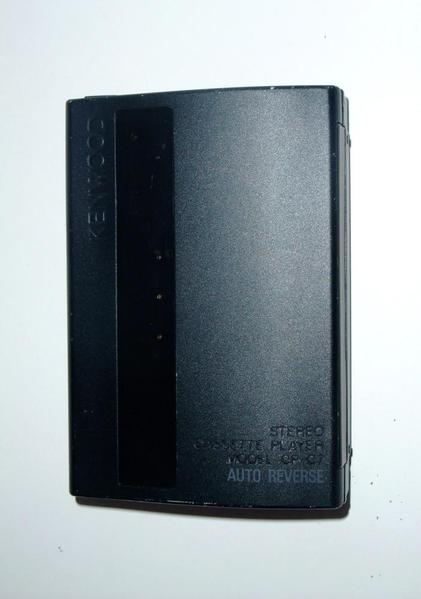
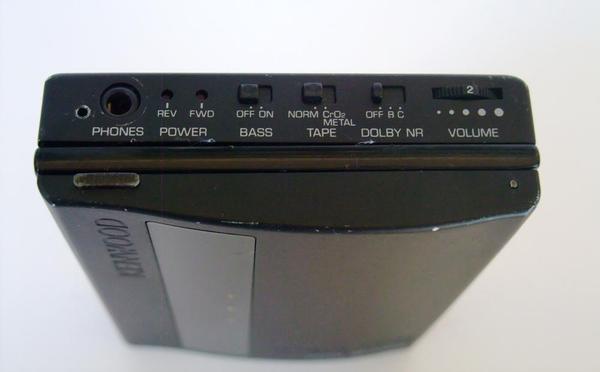
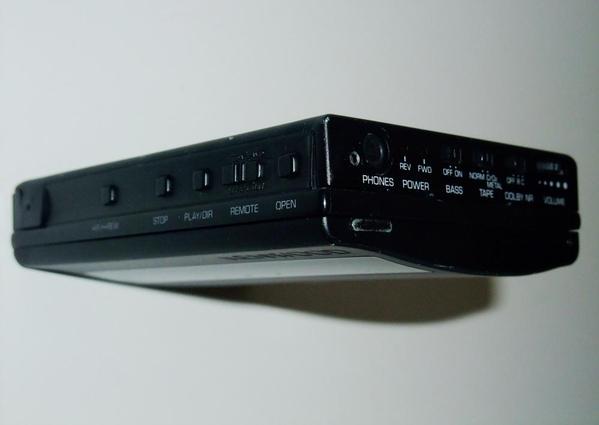
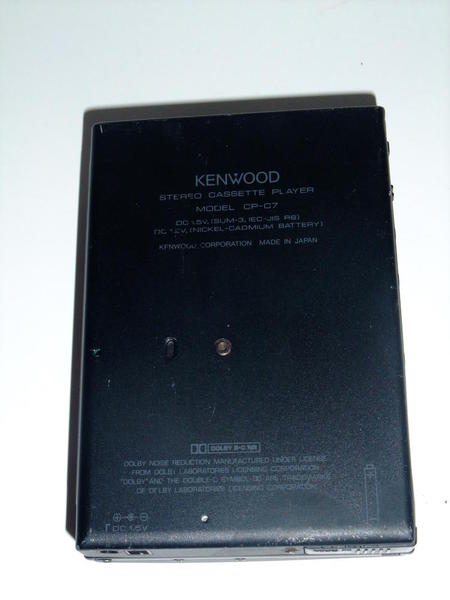
I haven't read all the text in this thread. However, liked the pics of the hs-px101, as I have 2 of these - one somewhat knackered & another in top shape like the one in the pics - a truly ace machine.
thanks for sharing

That's an awesome post. Very informative.
walkman.archive - 2010-09-01 14:58
quote:
SONY WM-701C. The second smallest player made.
Hi Edward. And what's the smallest one? The sony WM-30? The sanyo EP-S7?
regards,
Hello Hugo, Not to go to off topic in this Dolby C posting but to answer your question the Sanyo JJ-P4 is the smallest Walkman with battery and tape included. Please visit the topic on this to add further comments there.
WORLDS SMALLEST WALKMAN - Final Resultsvery very interesting read.
thanx
so, only use c for decks.
the nak cr-7 didn't work well
the b215 works ok.
Updated with additional info
AIWA
1. HS-PX10 [J]/HS-PX101/HS-PX700 [U] (1987) AAAx2 or gumstick 2V PB-1 - remote control
2. HS-PC20 [J]/HS-PC202 (1988) AAAx2 or gumstick 2V - later models made in Singapore
3. HS-PX20 [J] (1988) AAAx2 or gumstick 2V PB-2
4. HS-PC202MII (1989) AAAx2 or gumstick 2V PB-2 - similar electronics to HS-PC202 but different casing
5. HS-PC203 (1989) AAAx2 or gumstick 2V PB-2 - Identical to HS-PC202MII, but with AC adapter and PB battery as standard
6. HS-PX30 [J]/HS-PX303 (1989) AAAx2 or gumstick 2V PB-3
7. HS-PC202MIII (1990) AAAx2 or gumstick 2V PB-2 - similar electronics to HS-PC202 but different casing
8. HS-PC204 (1990) AAAx2 or gumstick 2V PB-2 - Identical to HS-PC202MIII, but with AC adapter and PB battery as standard
9. HS-PX50 [J]/HS-PX505 (1990) AAAx2 or gumstick 2V - Amorphous head
10. HS-PX1000 (1991-1992) AAAx2 or gumstick 2V PB-S5/5A - Real Time Spectrum Analyzer, titanium body, amorphous head, remote control
11. HS-JX70 [J,T]/HS-JX707/HS-JX707D [T] (1991-1993) AAAx2 or gumstick 2V PB-S5/5A - Voice Navigation, world clock (non-programmable on JX70), sleep, timer, remote control, amorphous head, reverse recording
12. HS-EX3000 [J,T]/HS-JX3000/HS-JX3000D [T] (1992) AAAx2 or gumstick 2V PB-S5/5A - Gold JX707, presentation box, wallet, HP-D9 headphones
13. HS-PX410 (1992) AAAx2
14. HS-JX909 (1993) AAAx2 - Gold JX707, new 'aiwa' logo, no presentation box etc.,
15. HS-JX929 [J,T](1994) AAAx2 - Update of HS-JX70, AM Stereo, updated amorphous head, new 'aiwa' logo
J - Japanese version
U - USA Version
T - TV Band
KENWOOD
1. CP-C7 (1989)
2. CP-D7 (1990) AAx1 or 1.2V gumstick
3. CP-E7 ( ? ) - Amorphous alloy head, remote control
4. CP-F7 ?
5. CP-J7 (1992) AAx1 or 1.2V gumstick - 3 colours: Black, Blue & Gray Titanium
6. CP-K7 (1992) AAx1 or 1.2V gumstick - LCD remote control, sound processor
7. CP-M7 (?) AAx1 or 1.2V gumstick - LCD remote control, blank skip
SONY
1. WM-D6C (1983-2002) AAx4
2. WM-DC2 (1984) AAx2
3. WM-550C (1987-1988) AAx1 or 1.2V gumstick
4. WM-F550C (1987-1988) AAx1 or 1.2V gumstick similar to WM-550C but with FM/AM/TV radio
5. WM-701C, 701S, 701T (1989) 1.2V gumstick
6. WM-F701C (1989) 1.2V gumstick similar to WM-F701C but with FM/AM/TV radio
7. WM-703C (1990) 1.2V gumstick
8. WM-DD9 (1990) AAx1 or 1.2V gumstick
9. WM-EX49C (1990) AAx1 or 1.2V gumstick
10. WM-B603 (1990) AAx1 or 1.2V gumstick Same as EX49C Euro model
11. WM-DX100 (1991) AAx1 or 1.2V gumstick
PANASONIC
1. RQ-P515 (1988) Remote control, XBS, 5mW+5mW, 20~18,000Hz, Gumstick Battery.
2. RQ-P525 (1988) AAx2
3. RQ-P580 (1988) Wireless stereo Receiver/Remote control, 3 XBS, 5mW+5mW, 20~18,000Hz, Gumstick Battery.
4. RQ-S5 (1989) AAx1 or 1.2V gumstick - Remote control, fine gap head
5. RQ-S5V (1989) TV/FM/AM Radio, LCD on the unit, Remote control, S-XBS, 5mW+5mW, 15~20,000Hz, Gumstick Battery.
6. RQ-S6 (1990) Unique LCD on the unit, Remote control, S-XBS, 5mW+5mW, 15~20,000Hz, Gumstick Battery.
7. RQ-S55 (1990) Remote control, S-XBS, 5mW+5mW, 15~21,000Hz, Gumstick Battery.
8. RQ-S65 (1990) LCD Remote control, S-XBS, 5mW+5mW, 15~21,000Hz, Gumstick Battery. (Similar design to RQ-S45)
9. RQ-S80 (1991) 1.2V gumstick - 12 layer laminate head, LCD remote control
SHARP
1. JC-C30 ( ? ) AAx1 or 1.2V gumstick - Remote Control
2. JC-C50 (1989-1990) AAx1 or 1.2V gumstick - Remote control
Greeting all
Here is another Gem from KENWOOD The CP 7 Series with Dolby B-C The Kenwood CP-K7:
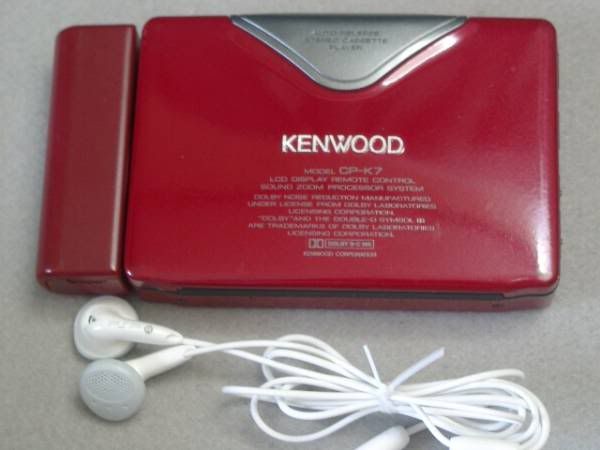
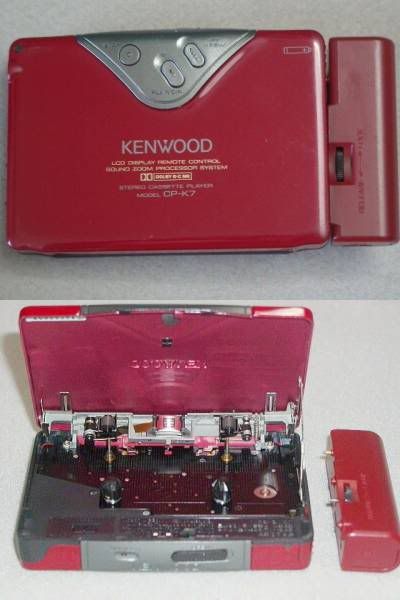

Here is the the Original SHARP JC-C50 with Dolby B-C also know as the OEM KENWOOD CP-D7 from my previous post.
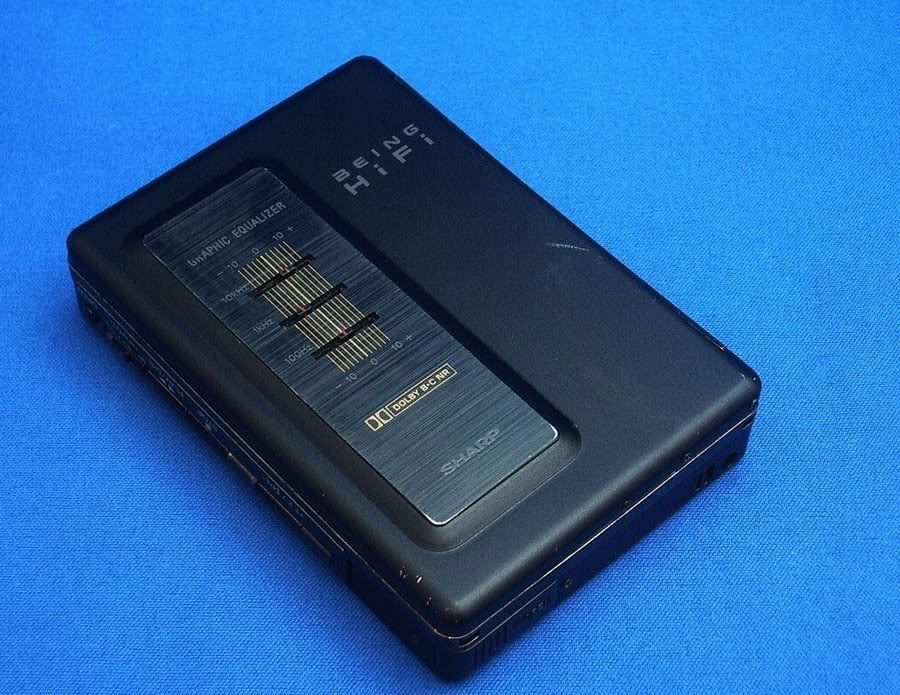
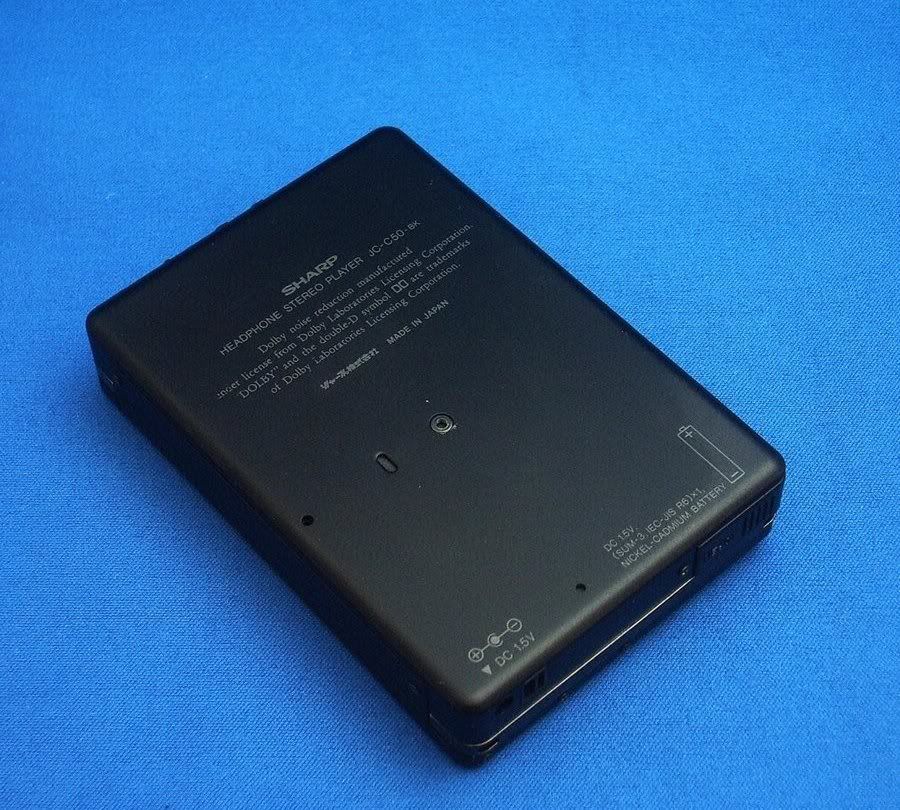

also have a Gum stick battery 1.5V & 1 AA batteries Eq & remote control
It is quite possible the Kenwoods were made by Sharp. I know for a fct that many, possibly all Kenwood MD units were made by Sharp. Buying a Kenwood basically meant buying a more expensive Sharp. Not worth it in my opinion unless it had to be a Kenwood for some reason. Some Kenwood players had different EQ settings from the Sharp in order to give them their "unique" sonic signature which I always found too colouring so I prefered the Sony machines.
Those are great!

quote:
Originally posted by Tuna:
It is quite possible the Kenwoods were made by Sharp. I know for a fact that many, possibly all Kenwood MD units were made by Sharp. Buying a Kenwood basically meant buying a more expensive Sharp.
Dear Tuna,
Not all of them were made by sharp, some made by Panasonic. You can tell by the thick Golden Headphones socket.
However Victor/JVC MD's were made by Panasonic with a very unique Design by JVC like the JVC XM-PJ1.

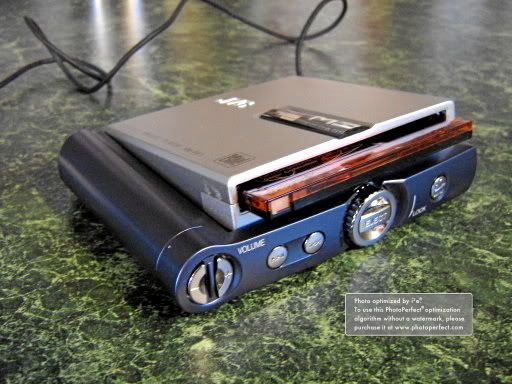
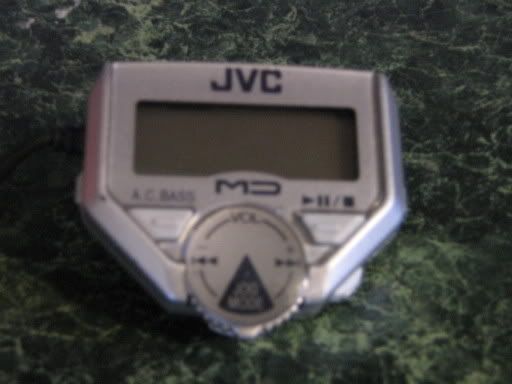
Very Unique MiniDisc indeed.
Dear Plop
The KENWOOD 7 series Year made are:
1. CP-C7 ( 1989 ) -
2. CP-D7 ( 1990 ) - AAx1 or 1.2v Gumstick
3. CP-J7 ( 1992 ) - AAx1 1.5v
4. CP-K7 ( 1992 ) - AAx1 or 1.2v Gumstick
The CP-J7 Looks to me as it was made by AIWA.
It have a very good spec.
Freq. 20~18.000kHz Normal/Metal
Max Output 5mW+5mW @16ohms
3 colors: Black, Blue & Gray Titanium
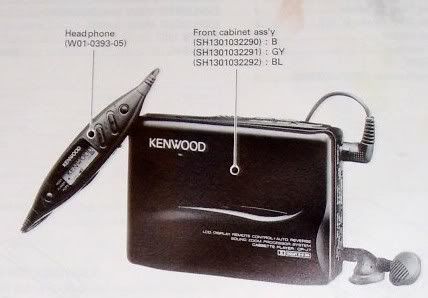
KENWOOD CP-E7 is also a Dolby B-C.
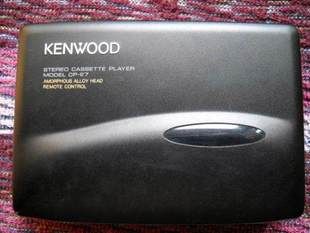
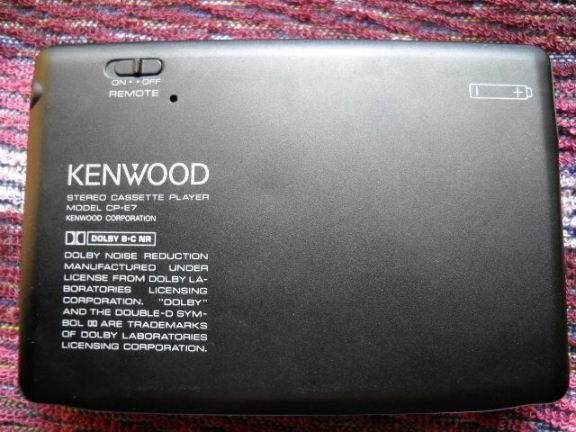
The Sharp JC-C50 ( 1989-90 ) AAx1 or 1.2v Gumstick
I am pretty sure the Kenwoods were made by Aiwa. Kenwood made very little portable units themselves and apart from certain mp3 players, their portable units wee made by Sharp and Aiwa.
Greetings all,
Here are some of
Panasonic Dolby C line from 1988 ~ 1995.
1. RQ-P580 (1988) Wireless stereo Receiver/Remote control, 3 XBS, 5mW+5mW, 20~18,000Hz, Gumstick Battery.
2. RQ-P515 (1988) Remote control, XBS, 5mW+5mW, 20~18,000Hz, Gumstick Battery.
3. RQ-S5V (1989) TV/FM/AM Radio, LCD on the unit, Remote control, S-XBS, 5mW+5mW, 15~20,000Hz, Gumstick Battery.
4. RQ-S55 (1990) Remote control, S-XBS, 5mW+5mW, 15~21,000Hz, Gumstick Battery.
5. RQ-S6 (1990) Unique LCD on the unit, Remote control, S-XBS, 5mW+5mW, 15~20,000Hz, Gumstick Battery.
6. RQ-S65 (1990) LCD Remote control, S-XBS, 5mW+5mW, 15~21,000Hz, Gumstick Battery. (Similar design to RQ-S45)
Note: According to an old Japanese service manual the RQ-SX22V (1995) is a Dolby C Unit.
after some research Plop have found out that this is a printing error and the unit have Dolby B only.
The SX22V FM/AM Radio, LCD on the unit, LCD Remote control, S-XBS, 5mW+5mW, 15~20,000Hz, Gumstick Battery.
(My opinion was that there are 2 versions for this model and only the Japanese version is with Dolby C. So far I haven't examine any SX22V or a Japanese unit but the manual. so I guess time will tell if it is true)
RQ-P580: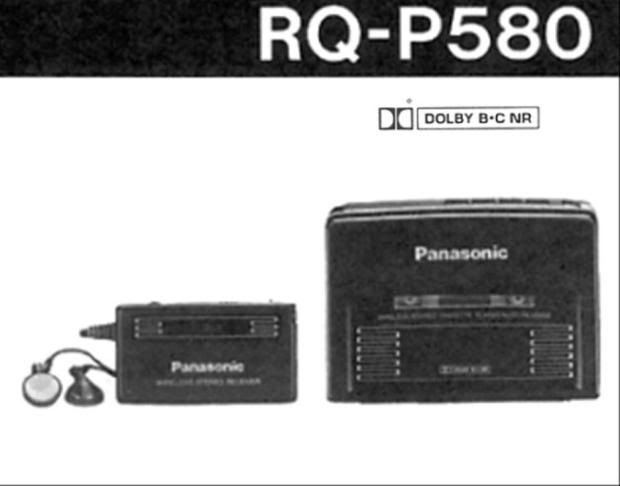 RQ-P515:
RQ-P515: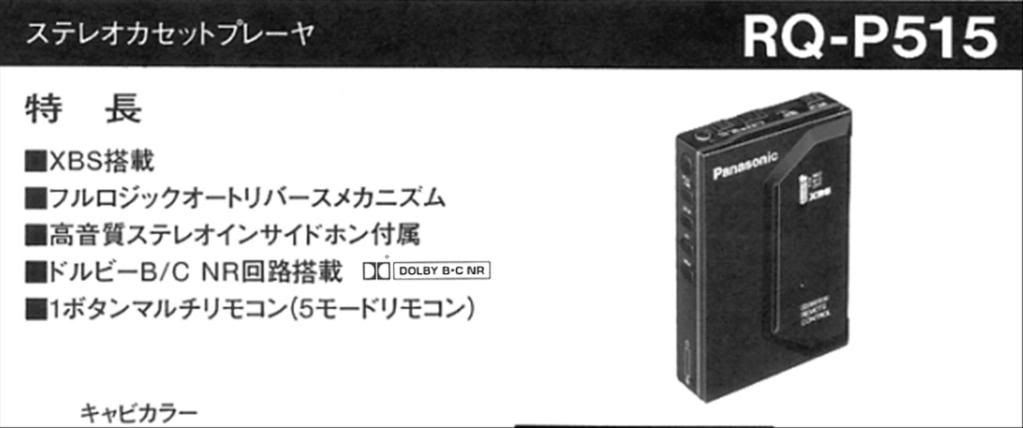 RQ-S5V:
RQ-S5V: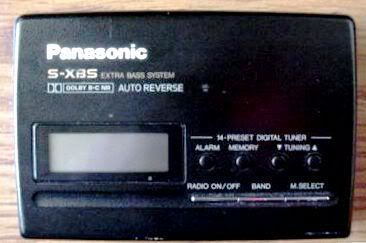 RQ-S55:
RQ-S55: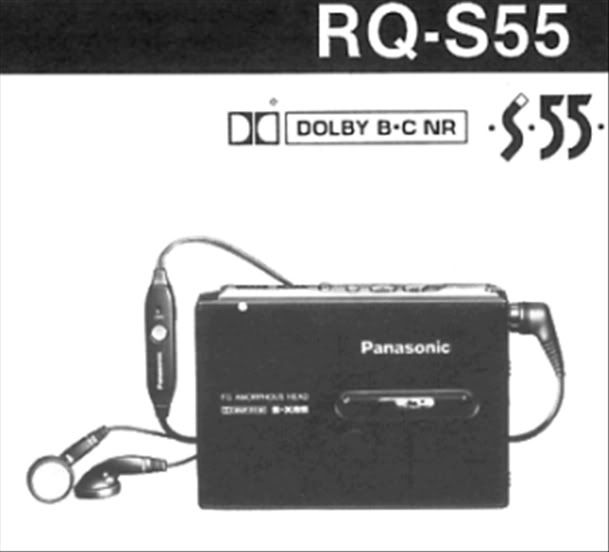 RQ-S6:
RQ-S6: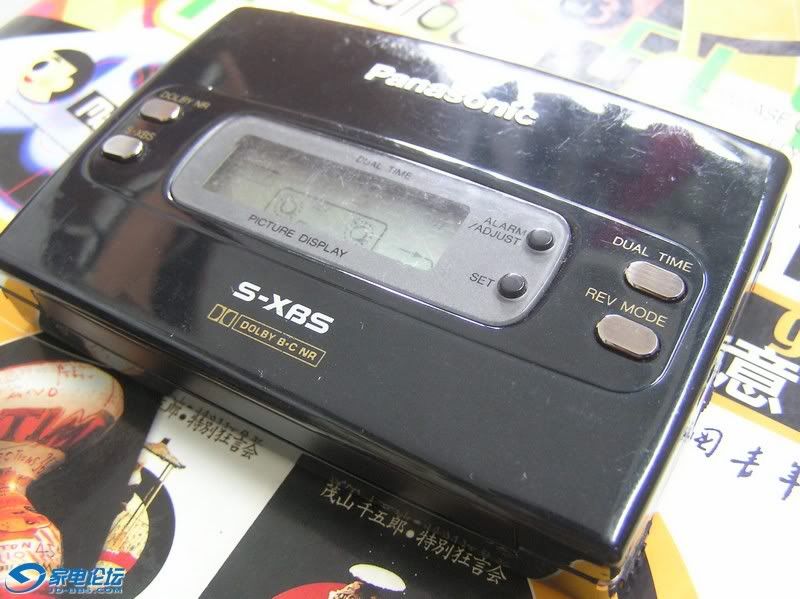
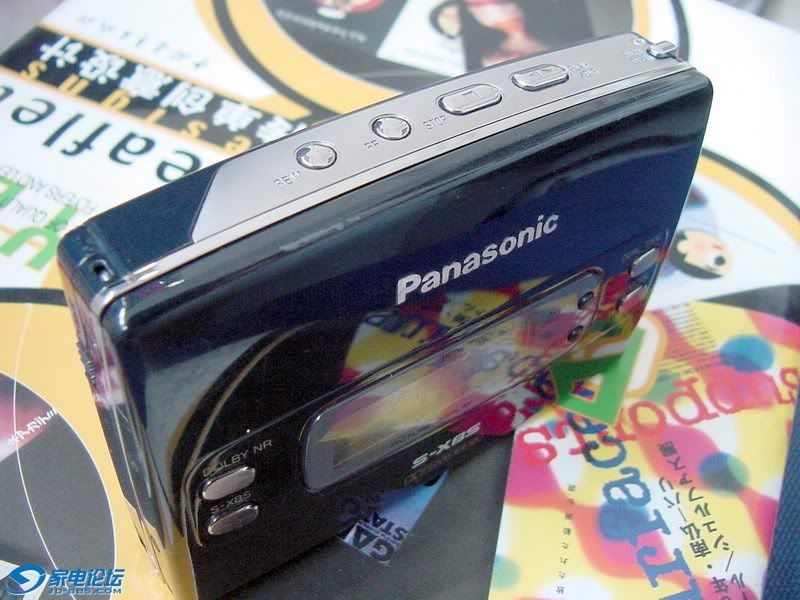
 RQ-S65:
RQ-S65: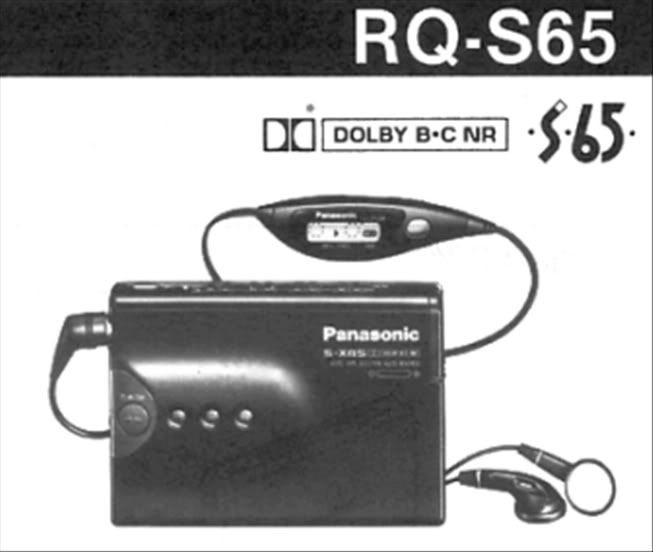 RQ-SX22V- Dolby B Only :
RQ-SX22V- Dolby B Only :
@The Lion
Is it the SX22V or the S22V? You have posted up pictures for a SX22V which definitely is Dolby B only.













































